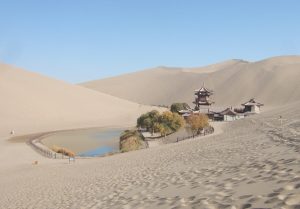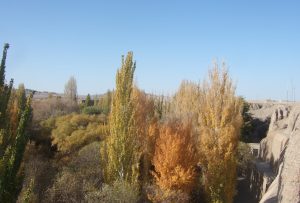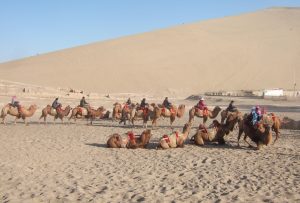Tarim basin oasis Dunhuang
- 30
- Apr
- 2017
- Posted Bychinachris
- InPlaces
- No Comments.
Dunhuang is a refreshing oasis adorned with deciduous vegetation. Whilst most tourists come here mainly to visit the Mo Gao caves bearing paintings and statues of the Buddha and his celestial entourage, other attractions include trees, water, sand dune mountains, and camel rides to the Crescent Moon spring
It was a relief to reach the oasis of Dunhuang following a dawn to late lunchtime sojourn through desert on a rather slow train. No palms at this oasis, it is poplars that predominate, interspersed with other, less pointy, deciduous trees, gorgeous in their October foliage, especially when viewed in sunshine against a backdrop of sand dune mountains. They give me a sense of almost being back home – feeling I could be somewhere like France – just a touch different from England, but not that far away.
The majority of tourist attractions are a fair distance from the town, but the West Thousand Buddha caves are only half an hour or so out on a public bus. Here I enjoy the scenery, the refreshing shade of the trees and the birdsong, but give a miss to a torch-lit tour viewing the paintings of Buddha in the caves.
Much more to my taste is the majesty of scenery, the towering dunes a few miles south of the town, and the jewel in their midst – the ‘Miraculous Pool’ – a crescent-shaped lake formed by the spring. Camels and rides for tourists add to the fun.
Below is a slideshow of fourteen photos of the area:

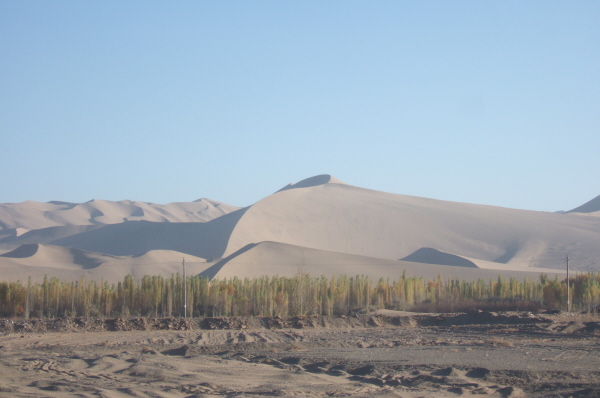
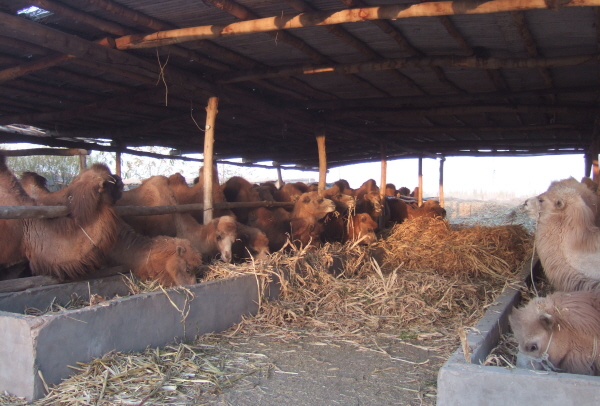

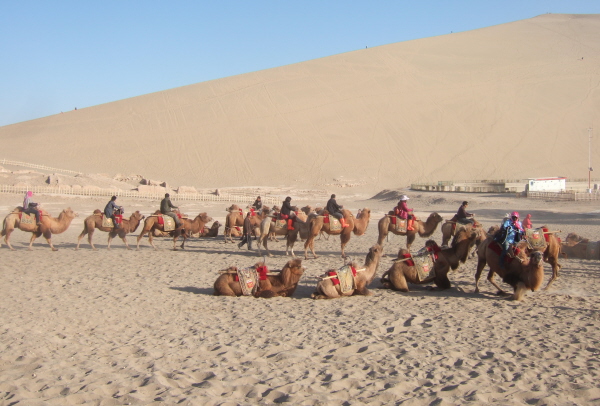
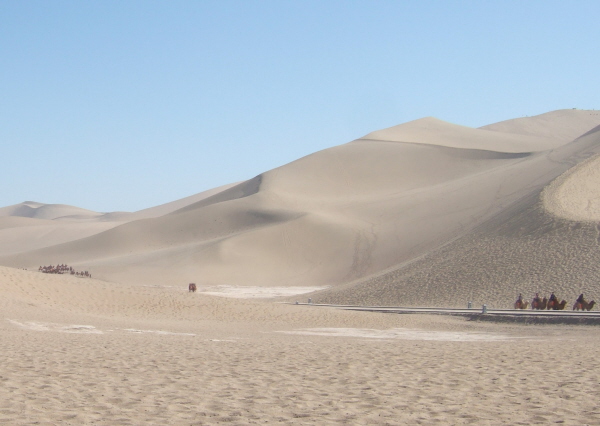
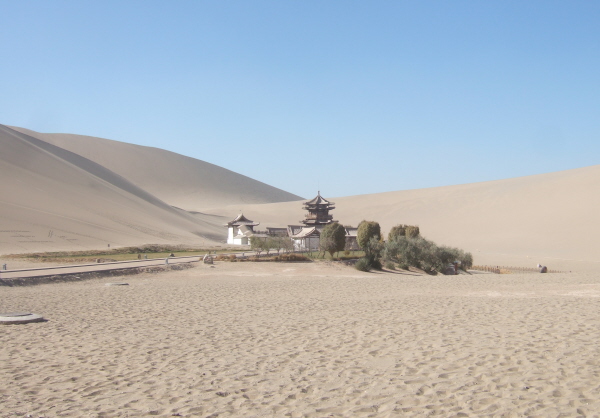

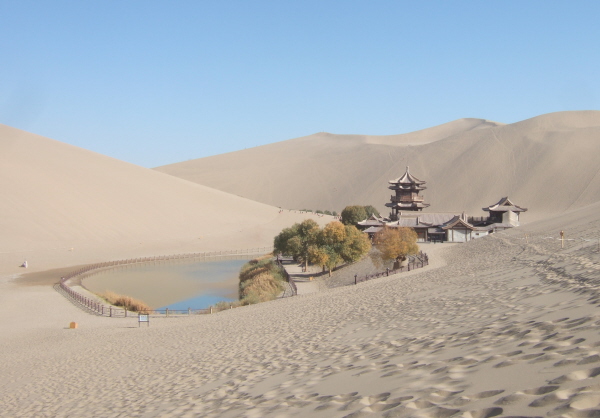


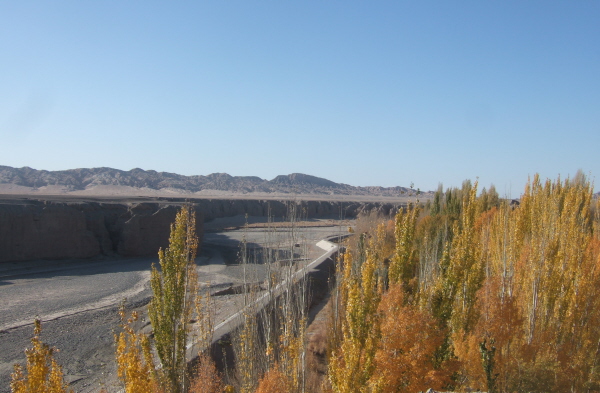
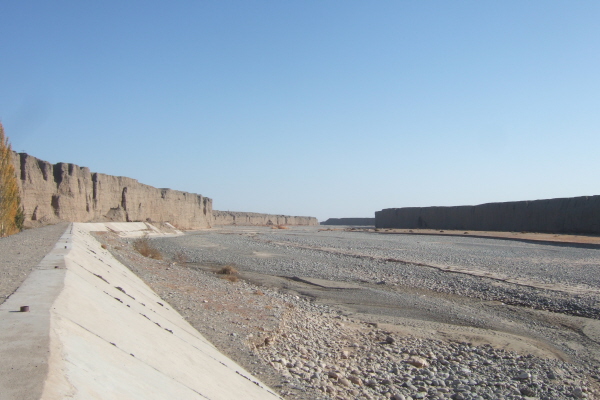


Mandarin-speaking actor from London – 讲普通话的伦敦表演者
Recent Posts
- Expert selects China’s greatest books
- Shih’s thoughts on Xi
- 引导在布鲁姆斯伯里步行 Guided walk in Bloomsbury
- Wierd scene aside the water
- Arthurian tour for Chinese visitors

